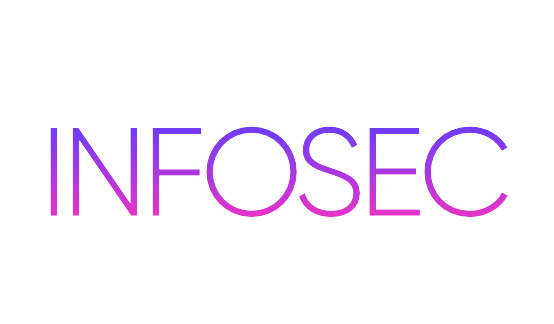Data loss, financial damage, a reputation ruined: cyber espionage can cause serious problems for any modern business. Corporate espionage has always been a reality, but new threats call for innovative solutions with the rise of cyber espionage. Who benefits from cyber espionage, and what can you do to safeguard your business?
What is Cyber Espionage?
Cyber espionage is an advanced kind of threat. Attackers typically try to dig deep into a network to access information that is advancing their capability.
It can take place over a long period of time, often without an organization realising that there is a threat actor, infiltrating deeply into a system and making it untrustworthy, even after remediation has been done.
Cyber espionage as a term alludes to a precise definition. Factors such as the extent and nature of the damage caused by the attack, the attacker’s identity and how the stolen information is used can all influence how it is defined.
Popular techniques for espionage –
For years, companies have sought to scope out profits by prying into their rivals’ business plans. One strategy is to submit workers who want to gain access to data or programmes where new technology is being built in “faux”. Technology provided an evolutionary path for this operation, which contributed to cyber espionage being born.
The fake employee is still a useful tactic, but an unsecured workstation is much more attractive nowadays. An individual can use a USB stick in a matter of seconds to upload a worm or virus. The goal may be to identify and open a secure portal, or to find a feat that can be targeted later.
Business websites may offer the same type of openings and experienced hackers may use vulnerable websites to perform an attack. Emails that appear to be official may be sent to specific individuals with higher network privileges who may be lured into clicking a link that will download code to enable subsequent attacks. This kind of attack is known as spear phishing.
Advanced browser software has thousands of lines of code in it. New lines of code add additional features as the programme evolves. Occasionally new code, through chance or oversight (or lack of it) destroys unknown features or works at odds with previously successful security patches. When a new feature or a new piece of software hits the market, countless individuals and interested parties around the world analyse it, dissect it and reverse engineer it.
Previous espionage attacks –
Google started discovering ongoing cyber-attacks in December 2009 aimed at collecting information related to Gmail accounts. Chinese human rights advocates have kept the accounts, and Google wasn’t the only option. To the credit of the search engine giant, at least 20 other businesses were immediately told that they too were being threatened by a flaw in Microsoft Internet Explorer. Preventive action was taken and at the beginning of 2010 McAfee Labs identified the problem and code-named it ‘Aurora’.
The Aurora attackers used targeted emails with malware sent to people considered to be good targets because they were likely to have a high degree of access to valuable intellectual property. The reaction to this act of cyber espionage varied across the Globe. Microsoft submitted a report on the security breach and released a security patch. Some companies and Governments have also updated browsers to help guard against potential attacks.
Today, around the world, similar cyber-espionage activities are taking place. Governments and companies are frequent targets of violence. The role of specially qualified and experienced Internet Information Security practitioners is to identify and avoid such vulnerabilities and attacks. Their methods and techniques are discussed in “Protecting Yourself against Cyber Espionage” in the second instalment of this series.
How to avoid Cyber Espionage?
Despite the increasing sophistication of cyber espionage strategies, companies still have actionable ways to protect their data. Here are steps you can take to limit the risks today.
Maintain updated software – They may become vulnerable to attacks when operating systems and software aren’t updated regularly. Malware and viruses often attempt to exploit the weak spots that outmoded systems and browsers are creating. Installing all available security updates on any company hardware wherever it is located, is an essential part of best practice.
Protect your password – Cracking a password has never been simpler with the brute-forcing applications available online. Employees should be made aware of the dangers they are going into using weak or duplicated login credentials for personal and work accounts. Invest in a password manager for all workers to support cybersecurity within an organization.
Implement a Security Endpoint system – Increasing connected computers, from internal servers to employee phones, may pose a threat to your organization. An unsecured endpoint can be exploited by competitors to gain access to password-protected data elsewhere within the company.
Ensure workers use a VPN – Check that all your employees use a reliable VPN. The service would encrypt a connected device’s browsing data, making it much more difficult for anyone to access the company’s information from one single entry point. Rolling out VPN across employee hardware can limit a hack’s damage and improve secure channels of communication within the network.
Keep your databases distanced – A cyber-espionage attack can probably be more harmful, if all the confidential information an organization has been stored in one location. Maintaining various databases across several separate digital storage spaces would restrict how much a spy in one operation can steal. Even if a database or endpoint device is compromised, then it still can mitigate the damage.
The only way to protect what you’ve worked hard to build is to be vigilant when it comes to cybersecurity. If you’d like to know more about how your business can benefit from managed services, just give us a call, we are here to help.
Cyber espionage is an advanced kind of threat. Attackers typically try to dig deep into a network to access is advancing their capability.











